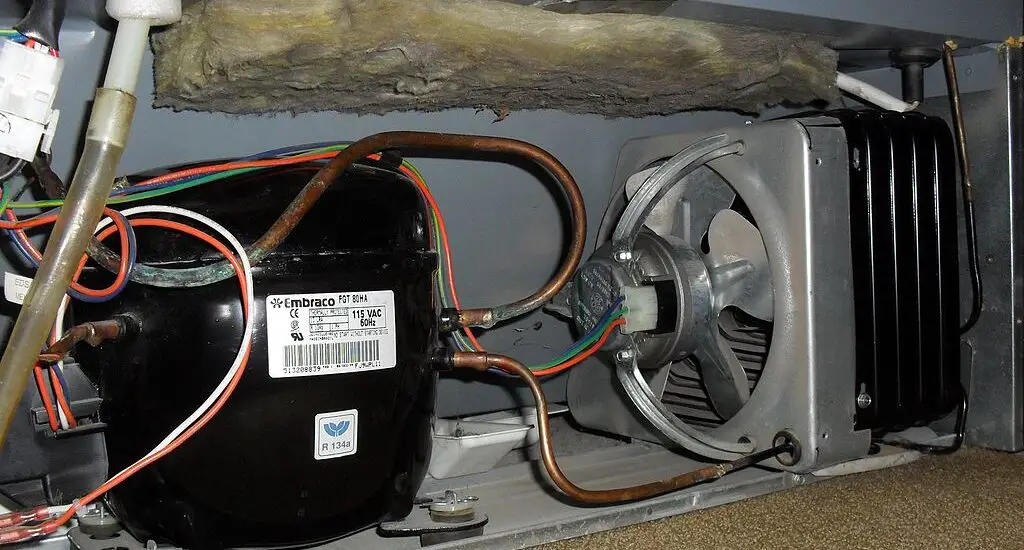At the heart of every refrigerator’s cooling functionality lies the compressor. If it’s not working right, your food might be at risk. This comprehensive guide on how to fix refrigerator compressor is here to give you practical knowledge and confidence to tackle the problem head-on.

Table of Contents
Understanding the Role of the Refrigerator Compressor
The refrigerator compressor is like the engine driving the whole cooling mechanism. It circulates the refrigerant, lowers the temperature inside, and ensures your food stays fresh. Understanding how this vital component works will help you fix it when things go south.
What is a Refrigerator Compressor?
A refrigerator compressor is a mechanical pump that’s responsible for moving refrigerant gas through the coils of the fridge. Think of it as the heart, rhythmically pumping the lifeblood of your fridge: the refrigerant.
Identifying a Faulty Compressor
When a compressor starts misbehaving, the refrigerator’s cooling capability decreases, putting your stored items at risk. If your fridge is making strange noises, not cooling properly, or if you notice a sudden increase in your electricity bills, your compressor could be the culprit. Knowing these symptoms will help you diagnose problems before they escalate.
Tools Needed for Fixing a Refrigerator Compressor
Having the right set of tools is crucial. Fixing a refrigerator compressor is a hands-on task requiring both common and specialized tools. These tools ensure accuracy and safety while you’re doing the repair.
Basic Hand Tools
Essential hand tools for this task include a variety of screwdrivers, a socket set, needle-nose pliers, and a bright flashlight. These will help you disassemble, adjust, and reassemble parts of the fridge during the repair process.
Specialized Tools
Beyond the basic tools, you’ll also need a multimeter to test the electrical components of the compressor and safety gear like gloves and goggles. A capacitor tester may also be handy if you suspect the compressor motor capacitor is faulty.
Check out these other related articles…
Refrigerator Compressor Knocking: Reasons & Solutions
Refrigerator Compressor Clicking On and Off [Solutions]
Freezer Compressor Humming but Not Starting [Solved]
Refrigeration Compressor Design: The Ultimate Guide
Refrigeration Compressor Working Principle: Your Easy Guide
Steps on How to Fix Refrigerator Compressor
Rolling up your sleeves to fix your refrigerator’s compressor is a worthy endeavor. Be prepared, though. This isn’t a ten-minute job. It requires precision, patience, and safety awareness. Here’s a step-by-step guide to help you along:
Safety Measures Before Starting the Repair
First things first, ensure safety. Unplug the refrigerator to avoid electric shocks. Push it gently from the wall to create a working space. Now, gear up with gloves and goggles. These safety measures will protect you from potential harm.
Accessing the Compressor
The compressor is generally located at the back of the fridge, housed within a protective casing. To access it, you’ll need to remove the fridge’s rear access panel. Use your screwdriver to gently remove the screws holding it in place. Keep these screws safe; you’ll need them later for reassembly. Once the panel is off, you should see the compressor, usually black, cylindrical, and about the size of a football.
Testing the Compressor
Next up, you’ll want to test the compressor to verify the problem. This is where your multimeter comes in handy. Set your multimeter to read resistance (ohms), then disconnect the wires from the compressor’s terminals. Touch one probe to one terminal and the other probe to another terminal. Repeat this process for all three terminals. A healthy compressor will read between 3-11 ohms. If the readings are outside this range, the compressor might be faulty.
Replacing or Repairing the Compressor
If your compressor isn’t working right, you’ll need to determine if it can be repaired or needs to be replaced. Some common issues, like a faulty start relay or capacitor, can be replaced. However, if the compressor motor itself is damaged, you’ll need a whole new compressor. For replacement, ensure you buy a compatible compressor for your refrigerator model. Follow the manufacturer’s instructions to install it, making sure to reconnect all the wires as they were.
Reassembling the Refrigerator
After the compressor issue has been addressed, it’s time to put everything back together. Replace the protective casing over the compressor and then secure the back access panel with the screws you kept safe earlier. Ensure every component is back in its original place. Finally, reconnect the power and monitor the fridge’s performance. It might take a few hours for the temperature to stabilize, so be patient.
Tips to Prevent Future Compressor Issues
Maintenance is key to preventing future compressor failures. Regular cleaning, proper usage, and keeping an eye out for early signs of trouble can make your compressor last longer.
When to Call a Professional
Although DIY repairs can be rewarding and cost-effective, they’re not always the best route. If the compressor problem persists or if you’re uncomfortable handling the task, it’s wise to call in a professional technician. They have the expertise and the tools to get your fridge running optimally again.